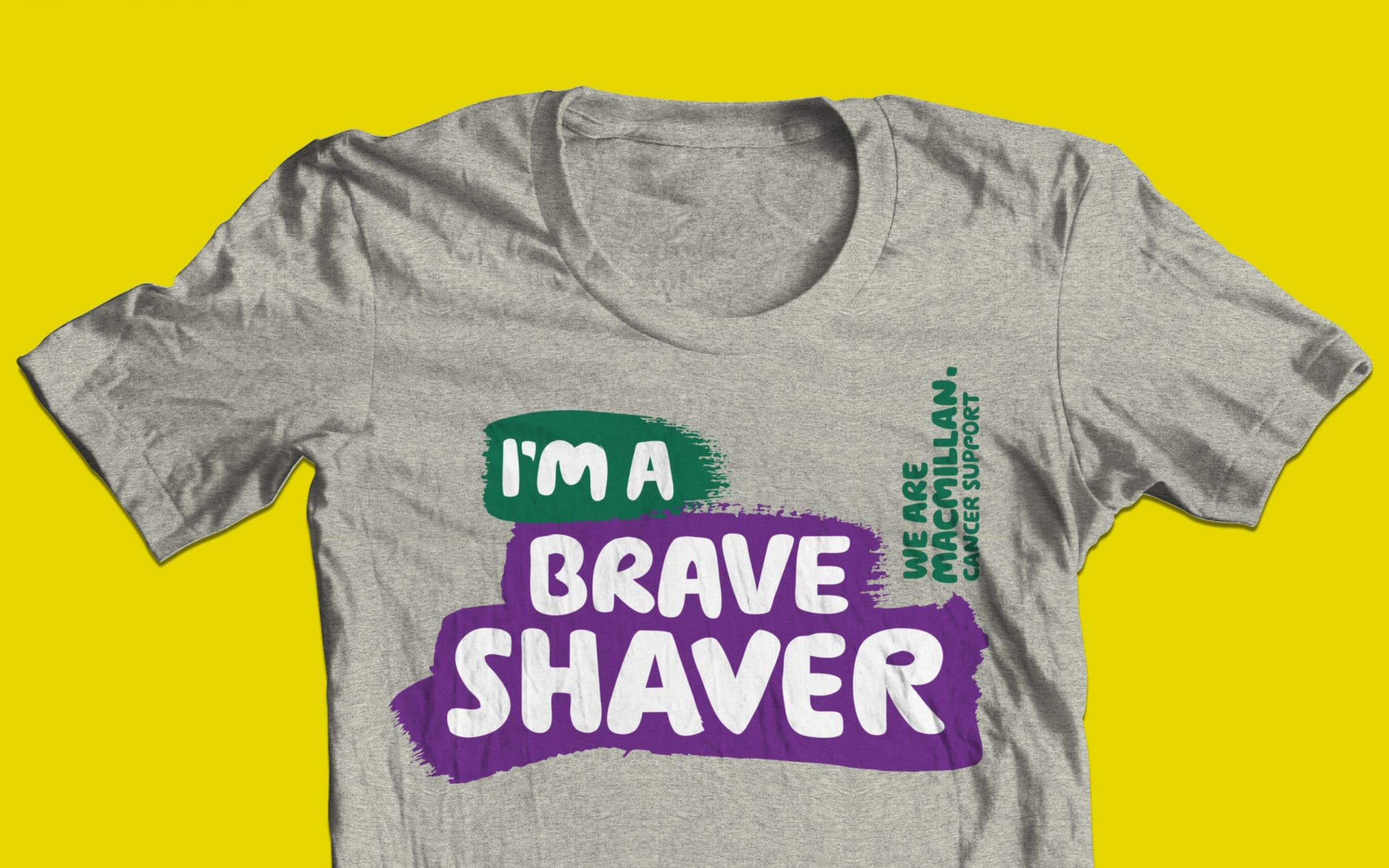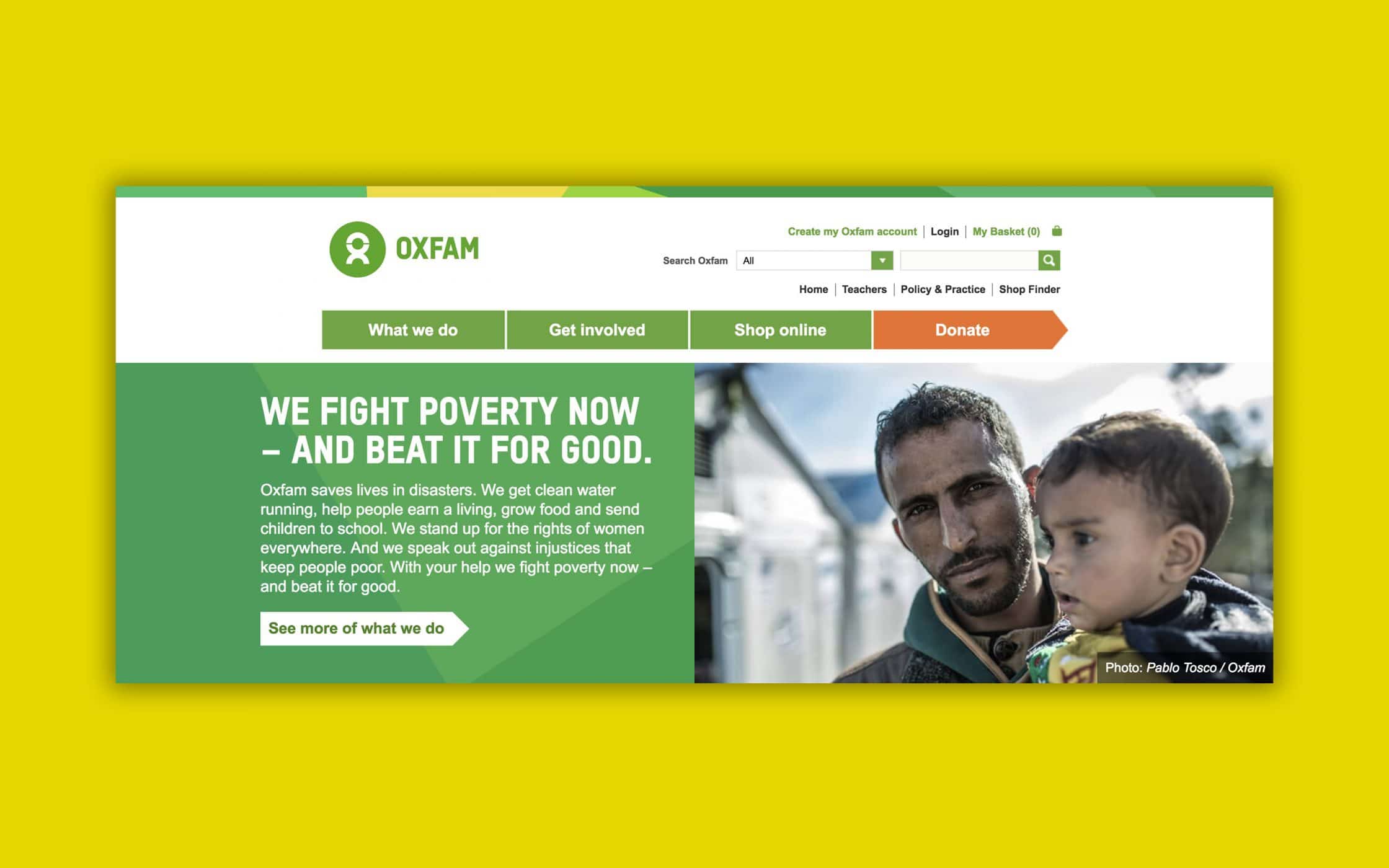The ultimate guide to charity branding: How to create a brand with heart

Charities have always had a problematic relationship with the concept of “branding.”
For years, branding’s close connection with “marketing” has lead non-profit organisations to believe that brands are an exclusively commercial entity. Some cynical groups even assume that “branding” is a way of tricking an audience into supporting a cause.
However, a brand is just an identity. It’s how you define yourself to your target audience and begin building the affinity that turns people into dedicated advocates and donators.
A brand is something that all groups have, regardless of whether you actively invest in it or not. The act of charity branding merely allows you to have some control over how people see your organisation.
Since charities of all shapes and sizes rely on the relationships they have with supporters to thrive, the best way to keep your cause alive is to work on making the right connections, through an image your followers can resonate with.
Branding a charity doesn’t mean hiding your human side behind a logo and attractive website. Instead, it’s about using the assets you have to give volume to your message and stand out. While we might not describe Fabrik directly as a charity branding agency, it’s safe to say we have experience in the sector. Just look at our work with Macmillan or Mayhew for instance.
To help you further your cause, we’re funnelling our knowledge of charity brands into a guide you can use to understand, build and implement the ultimate identity for your NPO.
Let’s jump right in.

Branding a charity: Why non-profits need branding
Think about your favourite iconic brands.
Every major entity, from McDonald’s, to Harley Davidson, reached the pinnacle of their success thanks to a powerful brand. Their presence in their chosen field is defined by a set of key characteristics, like a logo, website, tone of voice, and even an unforgettable name.
Just like for-profit companies, charities need the impact of a brand to help them connect with their audience on a deeper level. If you don’t believe us, just take a look at the research.
A report published in 2012, called “Branding Inside Out” found that charity branding actively improves the number of donations a non-profit organisation can get for their campaign.
Over the years, groups like Macmillan have invested heavily into branding and marketing, and they’ve reaped the benefits of that investment too. We’re proud to be one of the charity branding agencies that Macmillan turned to when they were commissioning their latest fundraising campaign.
Thanks to a clearly defined strategy, Macmillan was able to get a better insight into their target audience when they started working with us. They discovered that 70% of today’s online users access their content through a mobile device. As a result, they decided to work on a stronger mobile presence and an enhanced social media presence. As a result of their new and improved campaign, Macmillan’s re-invigorated brand earned an incredible £4.5 million in donations.
The evidence speaks for itself. Charity branding creates a more informed, engaged and active audience. Branding a charity:
- Increases opportunities for fundraising: People’s willingness to devote their time and money to a cause is directly influenced by the positive connection they have with a brand. The right image, personality, and tone of voice creates an identity that your donors can relate to, which leads to better fundraising.
- Spreads awareness: An attractive and engaging brand also inspires donors to support the cause with more than just their money. The best charity brands have social media profiles and online forums where advocates can share their experiences and spread awareness for your non-profit, opening the door for new donations.
- Increases trust: A consistent brand lets your audience know that they’re not just throwing their money down the drain. The more compelling your image is, the more your target market will trust that they’re genuinely making a difference to the world around them.

3 compelling characteristics of the top charity brands
Now you know that charity branding can help your organisation to grow, you might be wondering how branding a charity works.
There are several necessary steps involved in building a great brand. It’s easy to get caught up on things like choosing the ideal name, or selecting a logo that conveys the unique cause you support. However, the best charity brands know that an unforgettable identity has to come from the heart. After all, while for-profit companies appeal to the wants and needs of their target audience, non-profit organisations need to tap into something much more profound.
Branding a charity means finding a way to reach your audience on an emotional level and convincing them to do their part in changing the world. Here are just some of the things you’ll need to look at.
1. Vision and brand values
Every brand has a vision.
Monzo wants to give its customers a more innovative way to do their banking. Dyson wants to provide you with a more straightforward way to complete your household chores. These companies even have values that they use to direct their decisions, like a commitment to forward-thinking technology.
For charity brands, your vision and values are particularly important, as they’re how you’ll establish your initial emotional connection with your audience. Research shows that charitable giving is dictated by how well we can relate to a non-profit. That means that if you want to earn donors, you need to show people that you have the same values as them.
Look at Oxfam, for instance. From the moment you log onto their website, you see their mission:

As you continue to explore the site, you’ll find plenty of other examples of powerful language that the non-profit uses to connect with their audience. Make sure that you have the same clarity when you’re building your charity brand. Ask yourself:
- How do you want to change the world?
- What are you doing to achieve your mission?
- What are the values that define your organisation?
2. An unforgettable visual identity
When it comes to branding a charity, logos, and images are often the first things most people think of. However, it’s worth remembering that your visual identity is only one piece of the puzzle. The top charity brands also know that the underlying message of their organisation has to be just as vibrant and memorable.
Charity brands have rich visual identities, made up various components, like their logo, colour palette, typography, and even brand photography. Put all those elements together correctly, and you convey the nature of your organisation, as well as helping supporters to recognise you wherever you are. Think about how easy it is to identify a group like the WWF based on their logo alone.
Visuals have a considerable impact on the way your people feel about your NPO, and it’s not just your logo that counts. For instance, look at colour. Dog’s Trust uses bright and vibrant shades like yellow to convey the happiness that Dogs can bring to our lives.
Shapes and typography also help to mould your brand identity. For instance, “Shelter” uses the “H” in their logo to incorporate the image of a house – indicating what the charity does.

Your visual identity is pivotal to charity branding because it gives your non-profit another way to stand out from the crowd.
3. A consistent message
The best charity brands know that having their logo and brand colours consistent across all channels is crucial to brand recognition. However, great consistency doesn’t just apply to your visual identity. Unforgettable charity brands are consistent in everything they do, from the messages they send to the beliefs they share.
Greenpeace uses the same colours and imagery in all their content, but their personality and tone of voice stay the same too. Their inclusive attitude and dedication shine through in everything from their website content, to their social media posts:
By having the same core message and identity at the heart of everything you do, you make it easier for your audience to trust your organisation and believe in your cause.
Charity branding tips to get you started: How to build your identity
By this point, you know that your brand isn’t just another charity marketing campaign. Charity branding is about taking control of how your followers feel when they think about your non-profit. While you might not be able to prevent every misconception, the best charity brands can manage their reputation, and keep confusion to a minimum.
Though non-profit organisations do have different purposes and drivers than for-profit brands, every organisation that needs to gain the attention of a broader network of supporters can benefit from good branding. All you need to get started is a few simple tips.
1. Understand your audience and help them relate to you
Any excellent brand strategy starts with a thorough understanding of your target audience. After all, while charities often address universal issues in the world, some people will be more likely to join your cause than others. For example, though it’ll be hard to find someone against the idea of protecting animals, there are people out there who would rather donate their money to other worthy causes, like helping children or protecting the rainforest. You need to decide what kind of donor is most likely to support you.
Just as businesses use buyer personas to help them speak to the people with the best chance of converting, you can create a persona to help you relate to your target audience. Ask yourself:
- What values do your donors need to have?
- What kind of age group are you looking at? What type of people have donated in the past?
- Do you have a regional focus? Do your campaigns need to be local?
2. Differentiate yourself
For-profit businesses aren’t the only groups facing a serious amount of competition in the modern marketplace. The world is full of essential causes that your donors feel compelled to get behind. In fact, there are more than 168,000 charities in the UK and Wales, each with their own commitment to making the world a better place.
It’s important for you to make yourself stand out among the crowd. The best way to do this is to find a way to support a cause in a unique way. Think about how you can change the world or address a problem that no-one else has been able to face. At the same time, you can use your charity branding to set yourself apart too, by:
- Picking a unique name and logo.
- Sharing your mission in an exciting way (through live events, social media, etc).
- Choosing an unforgettable identity: A great personality makes your non-profit instantly more memorable.

3. Appeal to the emotional
Emotion is an integral part of branding in any sector, whether you’re a non-profit organisation or not. Today, companies from all backgrounds are using heartfelt stories and emotional marketing to help them resonate with their fans on a deeper level. However, the top charity brands know that emotion is their most valuable weapon in driving loyalty and engagement from their audience.
While for-profit brands can also rely on customer experience and the unique features of their products to set themselves apart, an NPO only has feeling to build on.
Remember that guilt isn’t the only emotion that a charity has to tap into when they’re building a brand. We’ve all seen the advertisements and marketing campaigns designed to make us feel bad about not doing more for a specific cause. However, you may be able to develop stronger connections with your followers if you focus on the positive impact they can have. Go beyond sympathy and embrace a wide range of emotions. For instance, “Save the Children” used shock tactics to compare the life of an English girl to the life of a child in the midst of the Syrian conflict:
4. Be transparent
Transparency is another trend that’s growing increasingly important among all brands. However, it’s fair to say that most people expect nonprofit organisations to be beacons of honesty and authenticity. Embed transparency into the heart of your brand to make sure that you’re continually providing your donors and fans with the latest information about how your group is growing. For instance:
- Create an email newsletter where you let people know how much progress you’re making towards funding goals and other accomplishments.
- Share updates on social media and communicate with the followers that send you messages there – answering any questions they have in a public forum.
- Make sure everyone in your team understands your mission and conveys your values in the things they do. That could mean creating a set of brand guidelines for your teams to use when marketing your charity or establishing an advocacy strategy.
5. Tell your story
Remember, there’s more to effective charity branding than knowing how to market your organisation or having a recognisable logo. The best charity brands have heart, and a story that people can really get behind. Give people an insight into why your organisation started, and what you’ve been doing over the years. For instance, on Mayhew’s website, the Group talks about their beginnings as a home for deserted cats in 1886.
Since then, the brand has seen a phenomenal amount of growth, from their Therapaws initiative to help the elderly through bonding moments with four-legged friends, to their Animal Welfare Officer strategy.
By sharing every step of their story, Mayhew gives more depth to their brand and creates that all-important transparency that’s so crucial for building the connections between nonprofits and their donors.
Inspirational identities: Learning from the best charity brands
All charities have a brand.
Whether you’re an organisation that actively works on their identity, like the NSPCC, or you’ve never thought about your image before today, a brand is “what people say about you when you’re not in the room.”
From the moment that your target audience starts to see your work in the community, or respond to your marketing messages, they build a perception about your organisation and what you stand for. It’s up to you to decide whether you want to use charity branding to improve your reputation and increase your sponsorship, or just let the chips fall where they may.
If you decide to take an active approach to branding, then it might help to see some of the top charity brands out there that are already leading the way in their consistency and creativity.
Here are just 3 of the best charity brands to inspire you.
1. Possible
Possible is an inspirational charity brand committed to making health care possible for people across the globe – even in some of the worlds most remote locations. The organisation delivers vital medical services to people in Nepal, by working together with existing companies and crowdfunding resources. Possible’s logo suggests the traditional cross of health services, while the two colours blending together indicate how the group works together with partners around the world.

The company has a strong tone of voice across numerous platforms, including Facebook and Twitter, and their lively website design helps to highlight their dedication to action in Nepal.
2. The World Wildlife Fund
When it comes to discussing the world’s best charity brands, the World Wildlife Fund features one of the most well-known identities in the non-profit space. Their panda illustration speaks to the company’s mission to conserve wildlife, while their black and white colouring conveys the simplicity of their cause.

The WWF has been around for approximately 50 years, and in that time its brand has spread across 100 countries, thanks to a consistent voice and image in everything they do. This charity has used a universally-recognisable symbol and a strong brand to bring groups together all over the globe in the quest for a better world.
3. Macmillan
The Macmillan cancer charity went through an extensive rebrand in 2006, to help it connect with a broader range of people from different backgrounds. Today, Macmillan isn’t only one of the most recognisable non-profit groups in the world – it’s also one of the brands that have seen the most improvement in terms of audience perception.

In a study conducted into the list of the UK’s most improved charity brands, YouGov discovered that Macmillan has had the best brand health of any charity, followed closely by Cancer Research UK, and the British Heart Foundation. Macmillan’s friendly font, carefully-chosen brand colours, like green (synonymous with health and growth), and robust marketing strategy have helped them to become one of the best charity brands around.

Have a heart: Give your charity a brand
The days where “branding” was something explicitly reserved for commercial companies are long gone. Today, brands are everywhere – even individual people like celebrities and influencers spend their days working on their brand image.
Used correctly, charity branding gives your non-profit a way to connect with its target audience. Branding a charity opens the door for new donations, by giving your group more depth. However, it also provides you with an incredible opportunity to demonstrate what your foundation is all about. Many modern NPOs are working with a charity branding agency to create identities that will help them boost awareness and reach their long-term goals.
Don’t leave your charity’s identity to chance. Make sure that every time someone sees your name or logo, they’re reminded of what you stand for, and why they need to support you.
Have a heart. Give your charity a brand.
If you enjoyed this article, you might enjoy these too:
— How to fundraise by seducing corporate sponsors
— Your guide to sustainable brand and green branding











